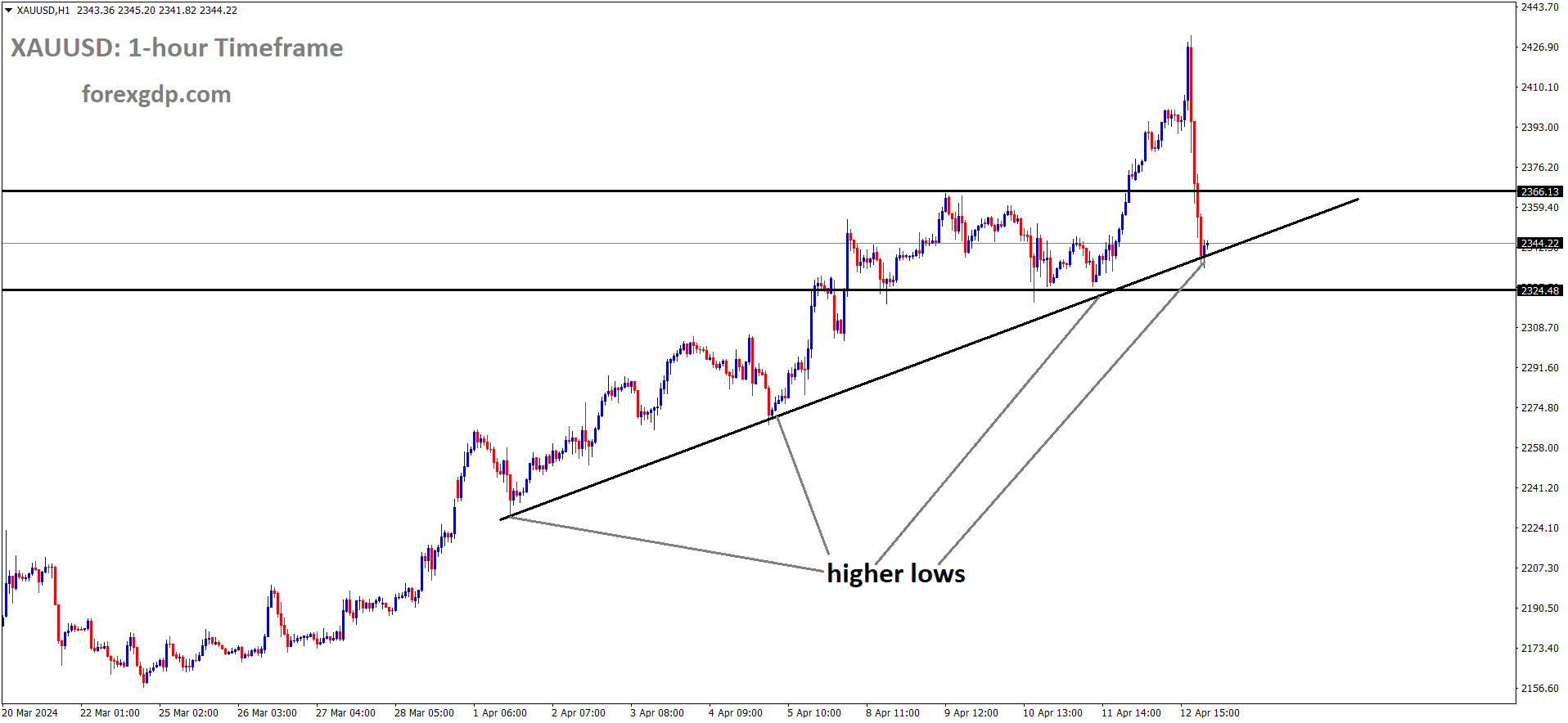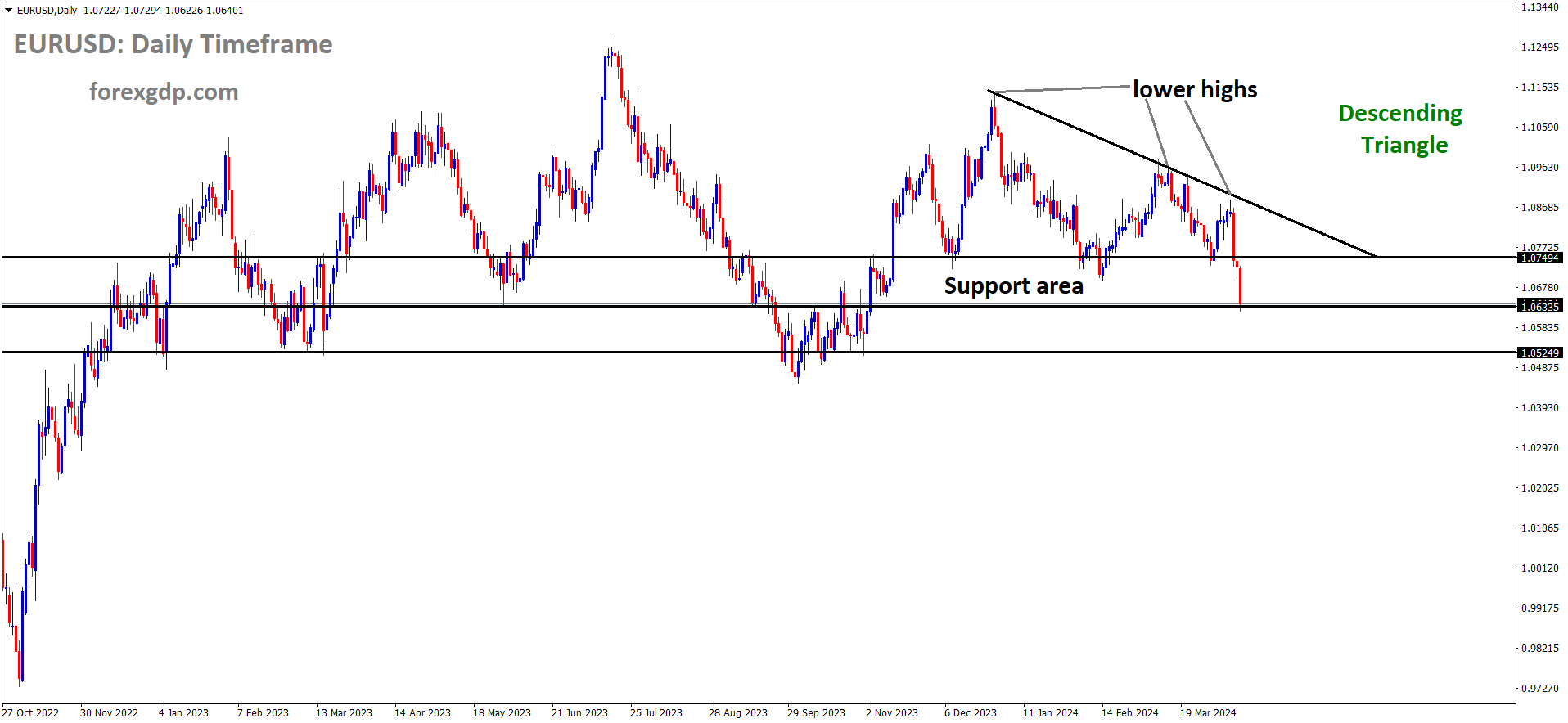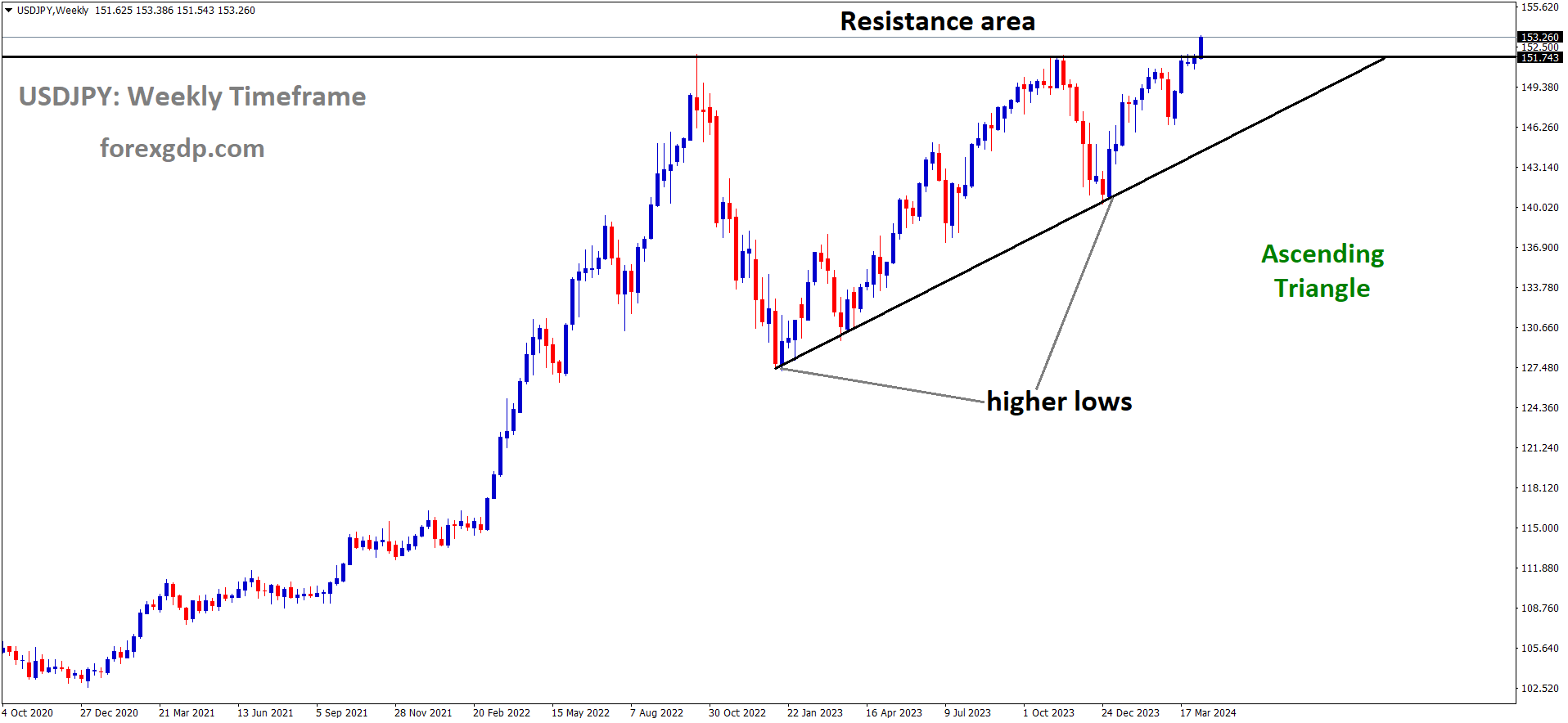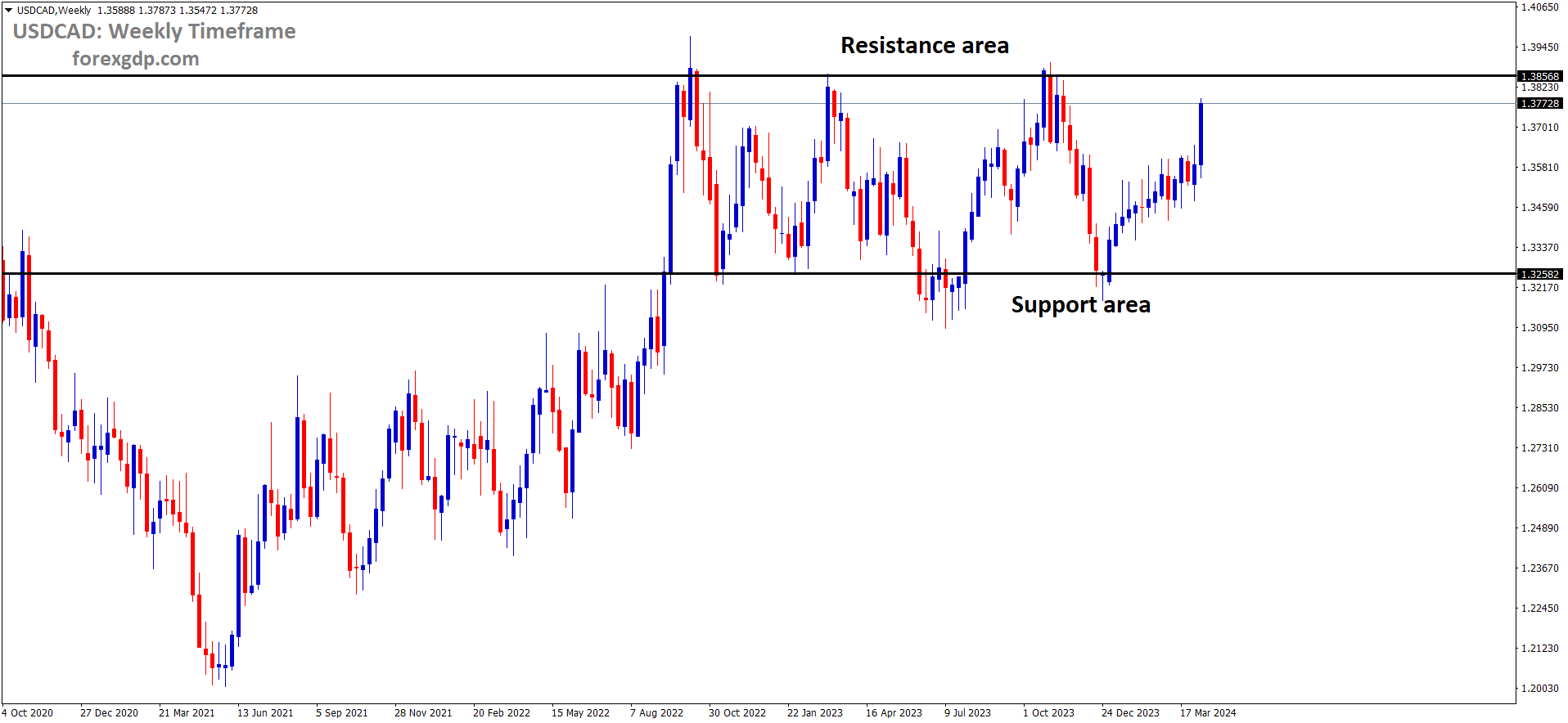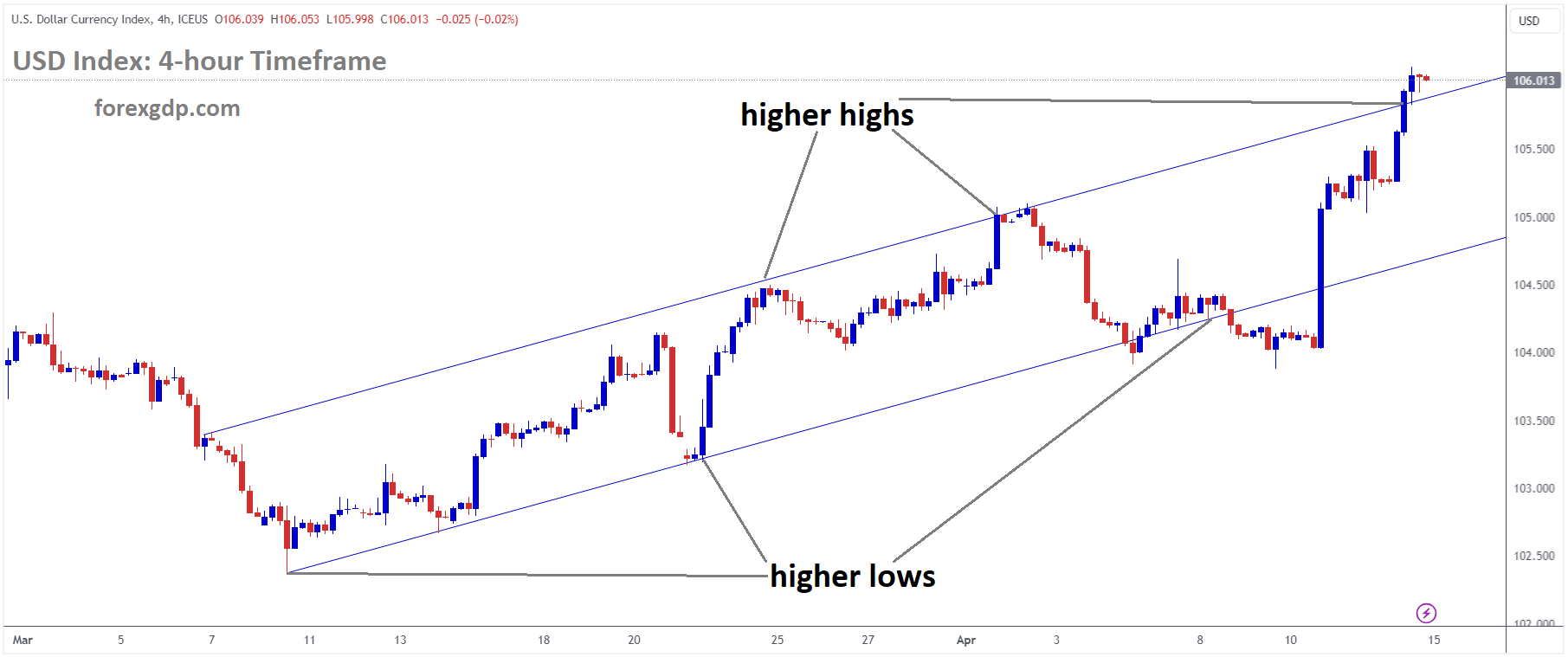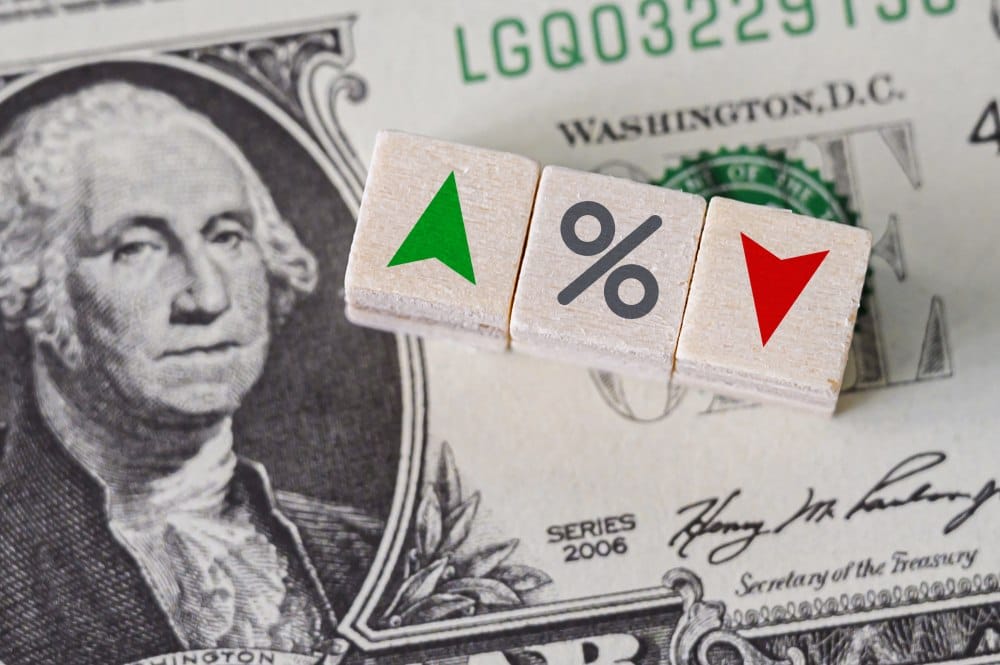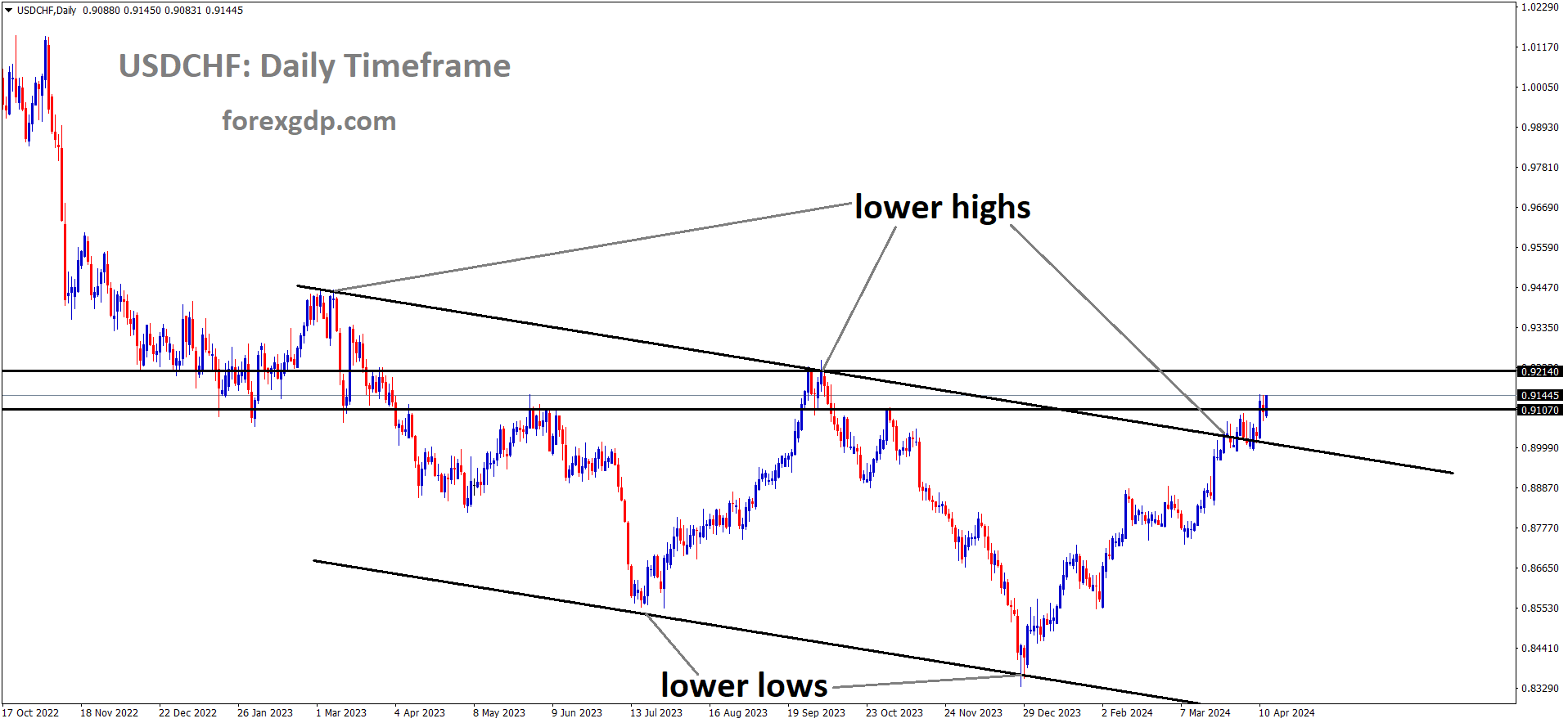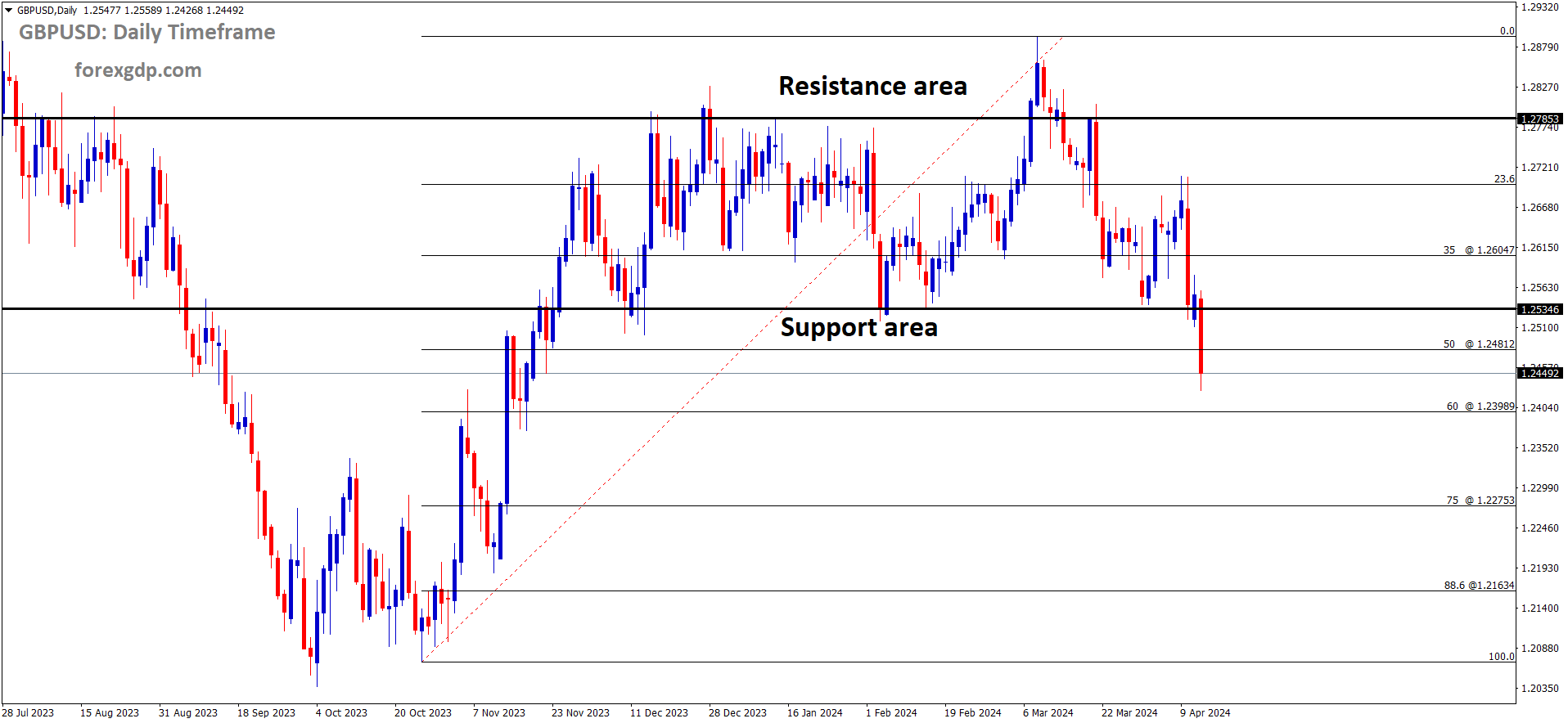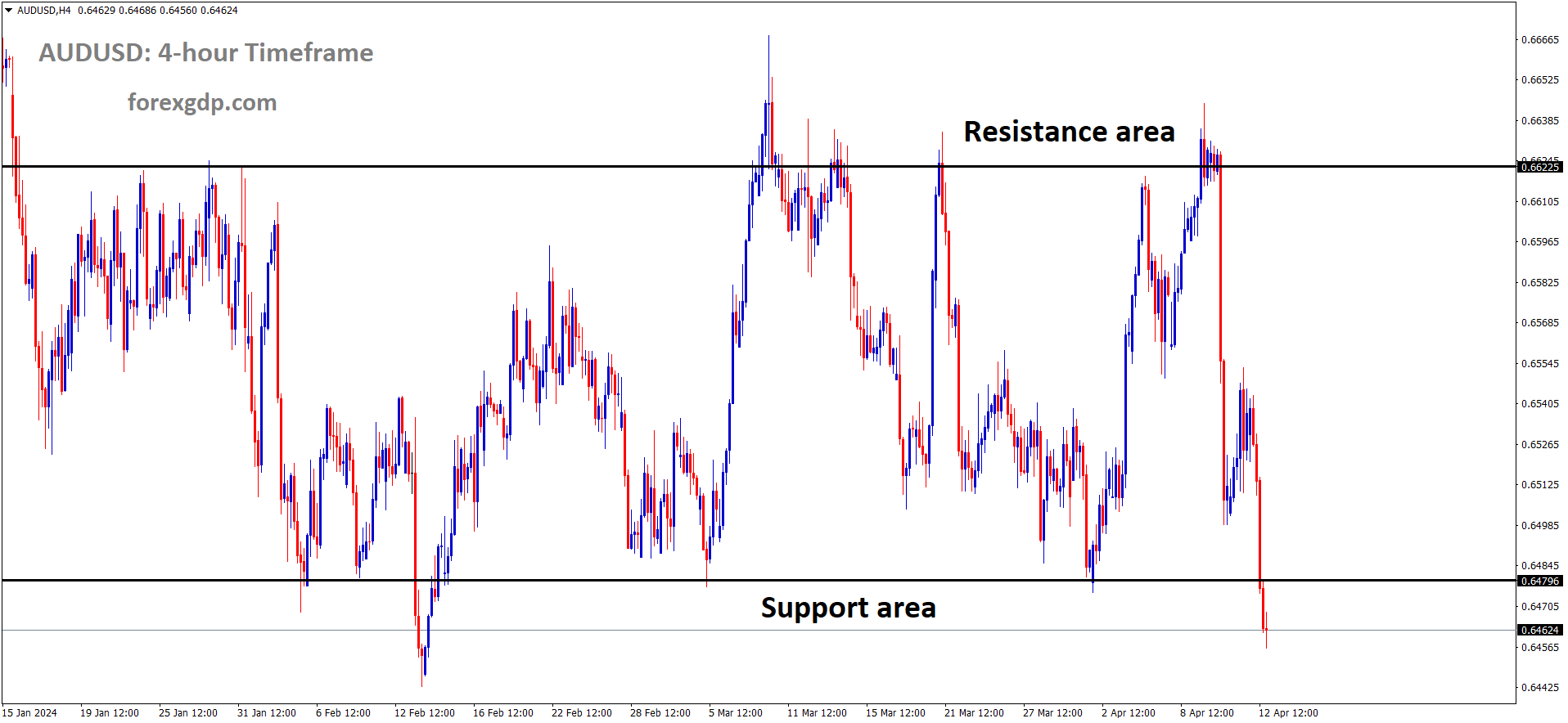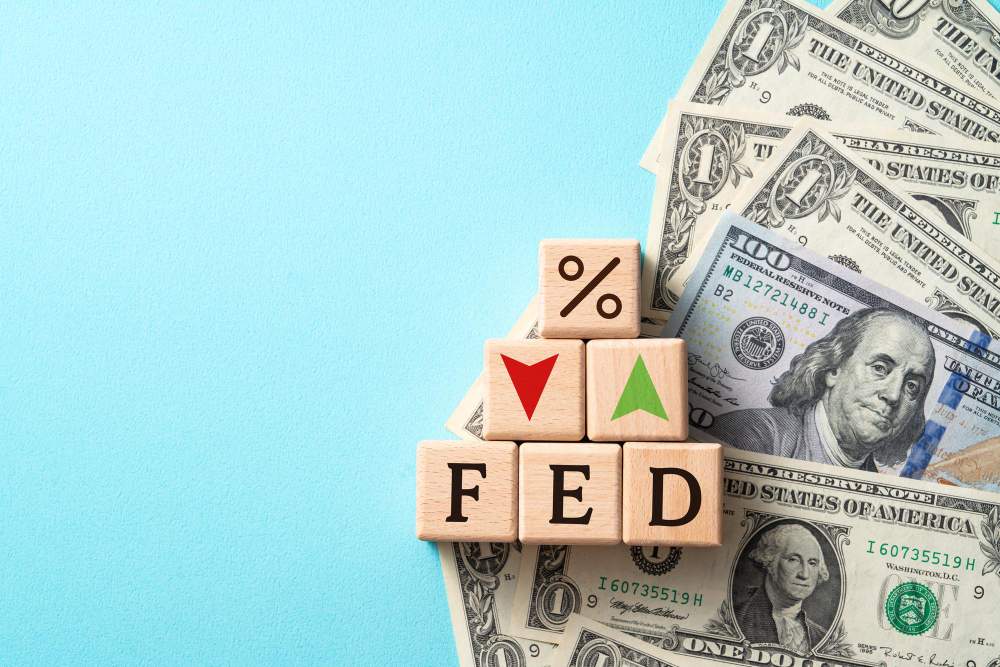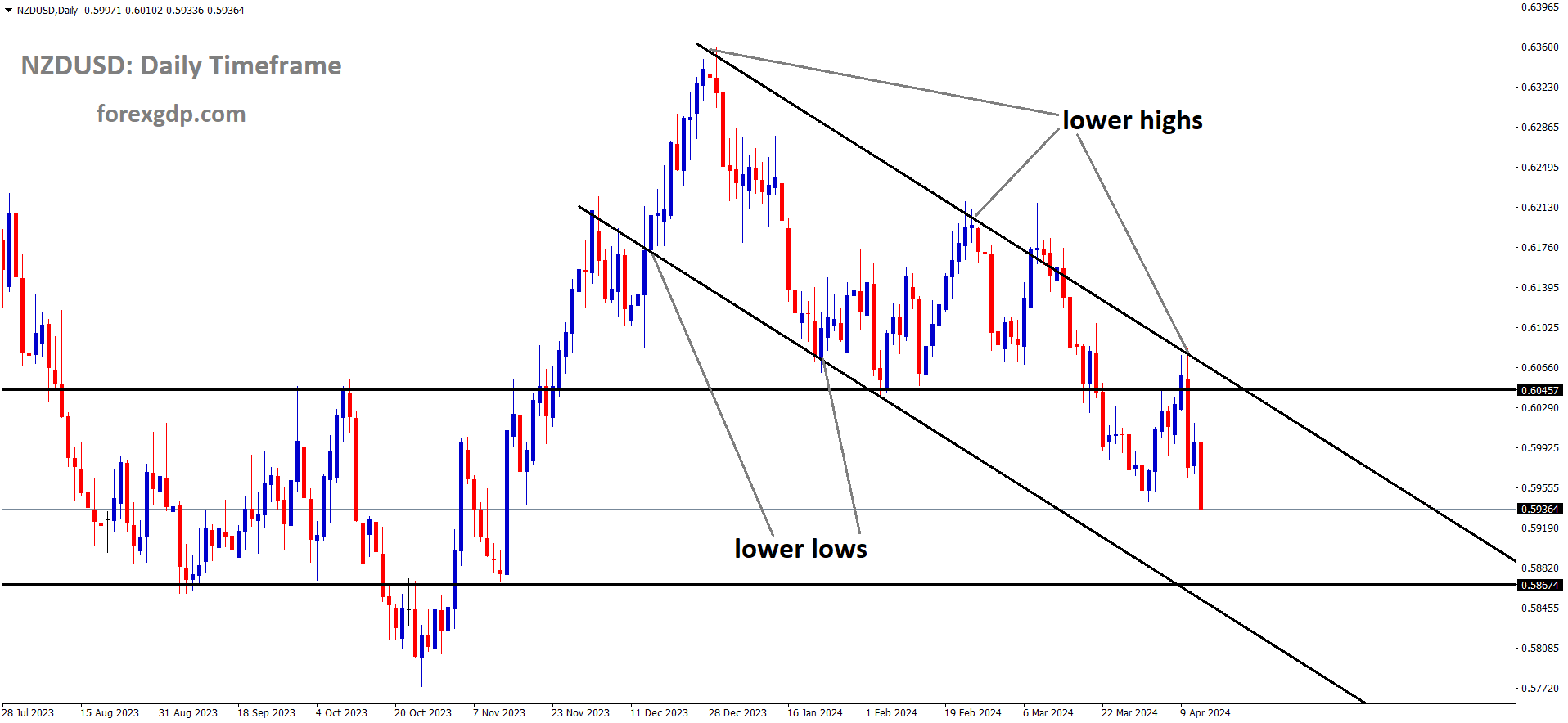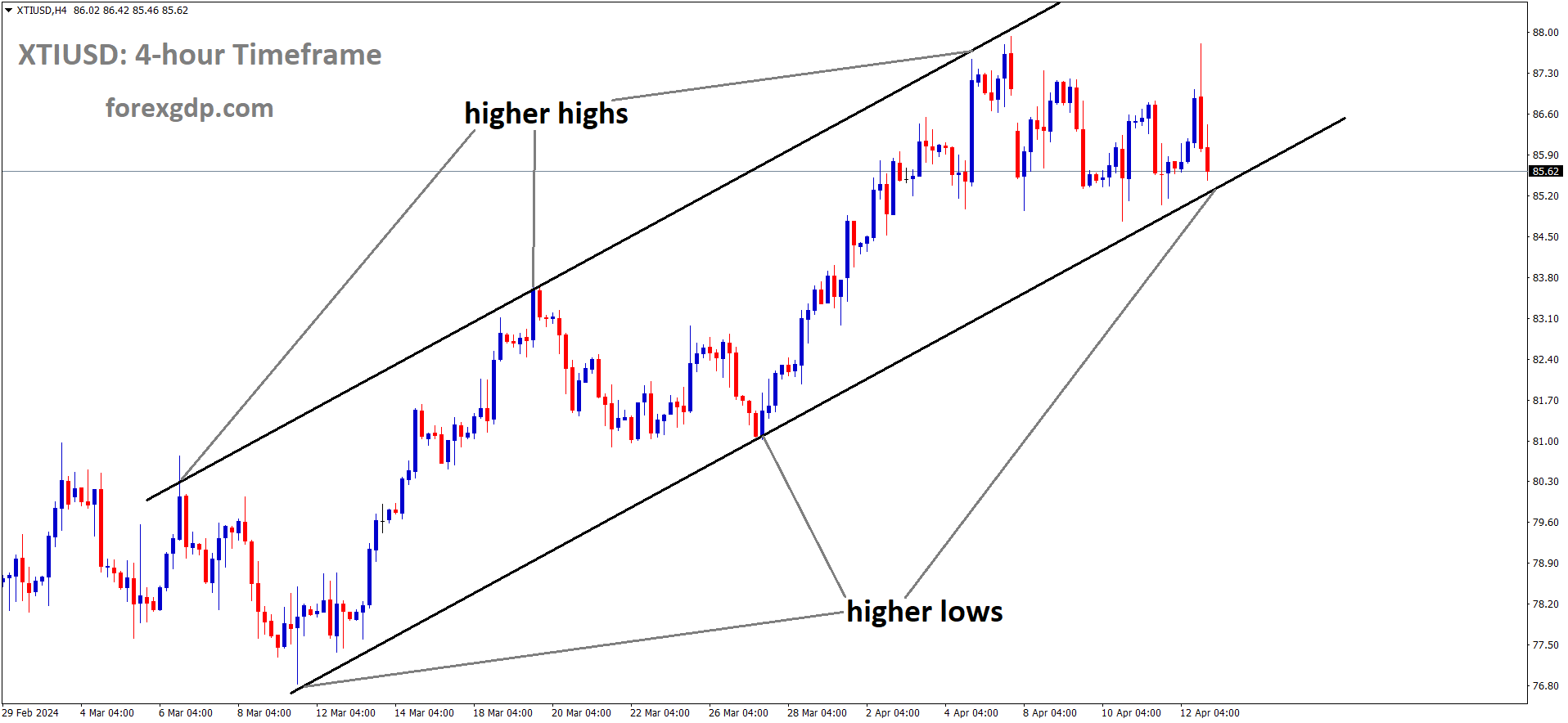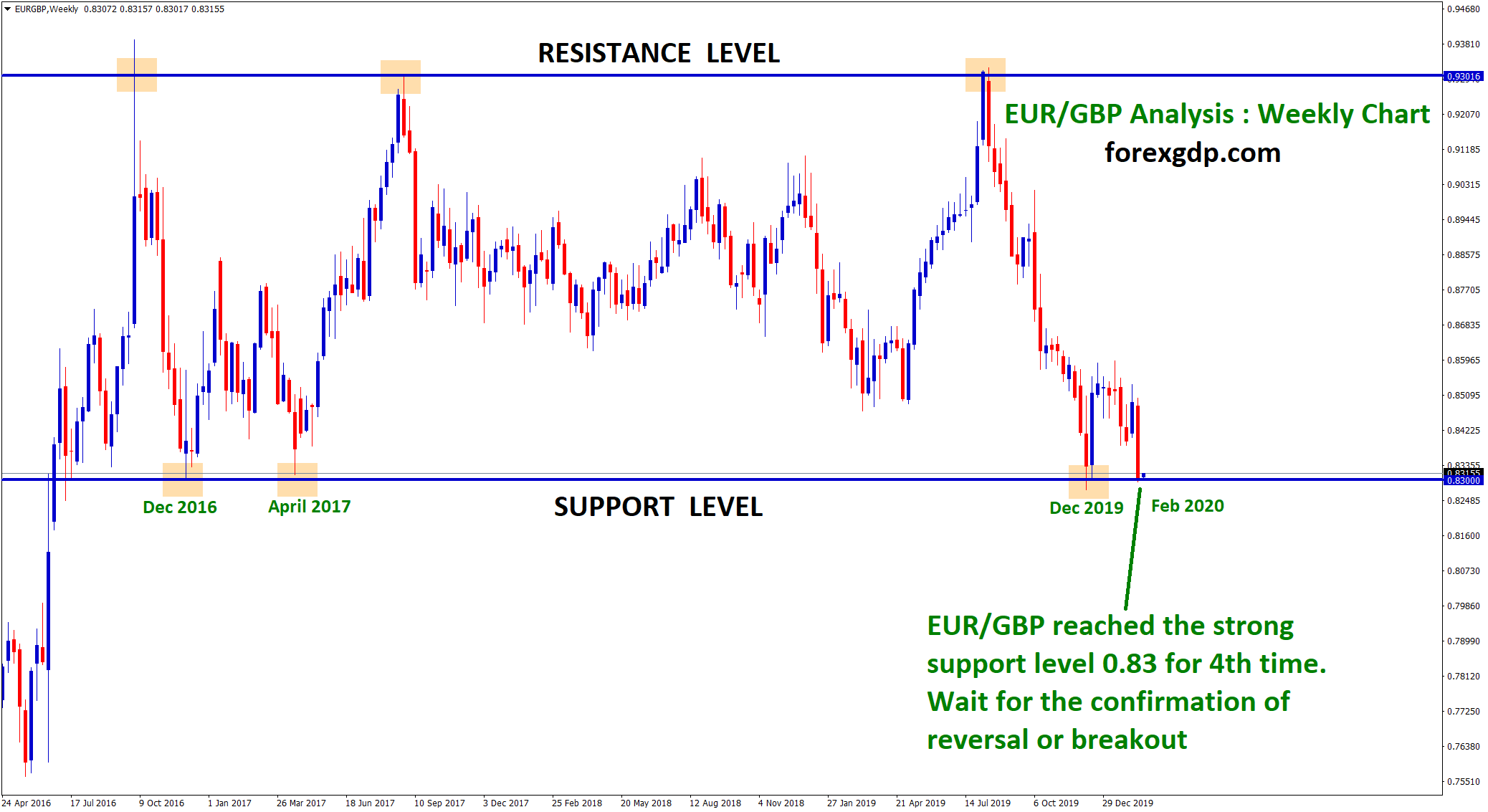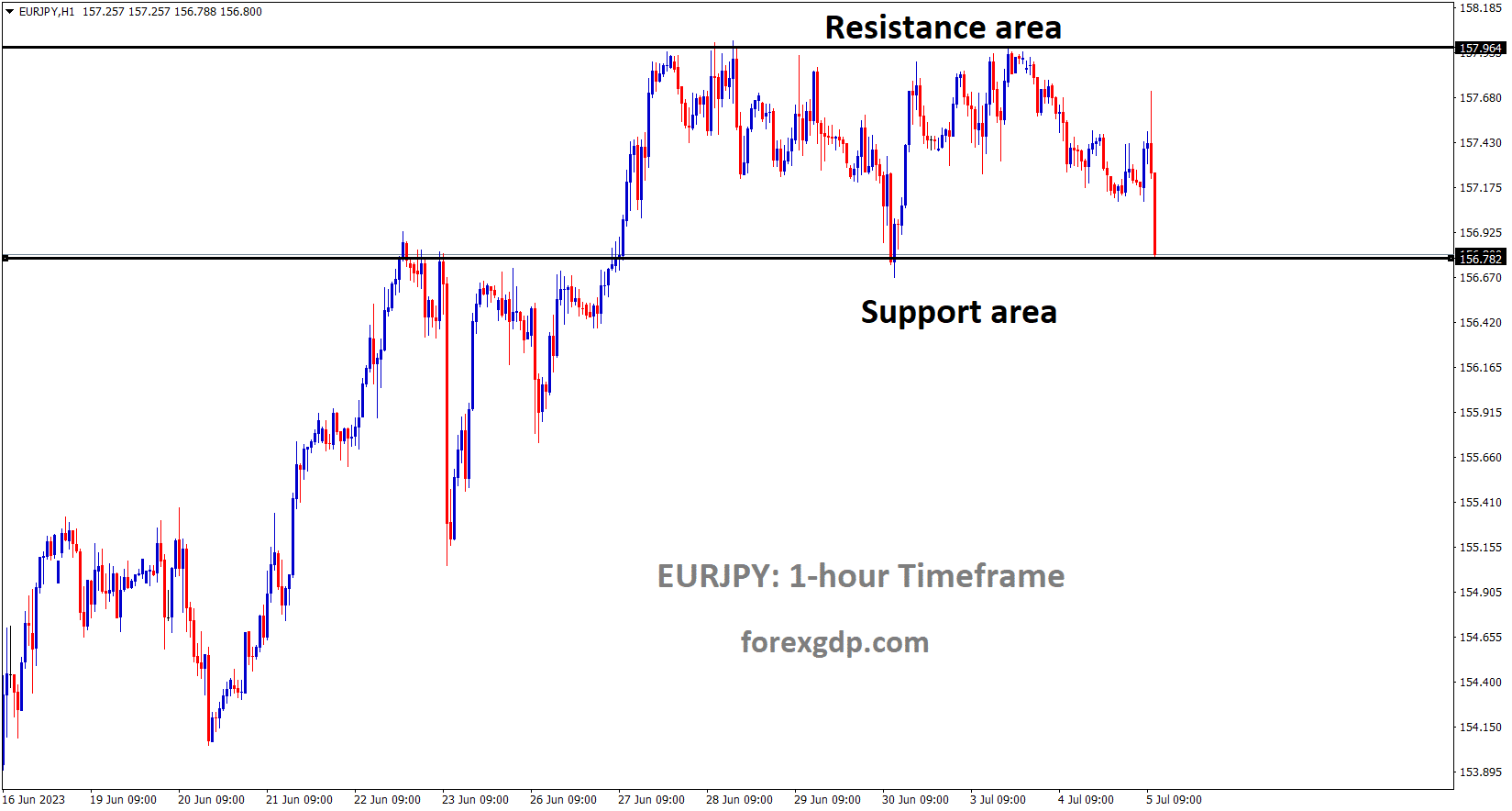XAUUSD – Gold Hits Record High Above $2,400, Then Pulls Back Amid Risk Aversion and Strong USD
The Gold prices are soaring to $2400 after the Iran is preparing for attacks on Israel after the Iran Embassy attacked on April 01, Seven Iran Soldiers were killed. FED Members repeated hawkish tone, negative supply of Oil shocks makes US inflation expectations higher in short term to 3.1% from 2.9%, Five year expectations at 3.0% from 2.8%.The World Gold council said China is the largest buyer of Gold in the February month from 12 tonnes to 2257 Tonnes.
XAUUSD is moving in uptrend line and market has reached higher low area of the pattern
Gold ended the week with a modest gain of 0.59%, marked by notable volatility that saw the precious metal soaring to an all-time high during the North American session on Friday. Geopolitical tensions fueled a flight to safe-haven assets, propelling gold to $2,431, a new record peak, before a pullback ensued amid overall strength in the US Dollar. As of the latest update, the XAU/USD pair trades at $2,343, reflecting a decline of 1.18%.
Reports indicate escalating tensions between Iran and Israel, with Iran allegedly preparing for an attack on Israeli soil in retaliation for an Israeli strike that claimed the lives of seven Iranian officials two weeks earlier.
Adding to the market volatility were the latest US inflation figures released on Wednesday and Thursday. Gold initially dipped to $2,303 following the release of the US Consumer Price Index (CPI). However, the decline was short-lived as inflationary pressures eased subsequent to the Producer Price Index (PPI) report, which came in below consensus expectations and some of the February readings.
Federal Reserve officials, including Boston Fed President Susan Collins, Chicago Fed President Austan Goolsbee, and Kansas City Fed’s Jeffrey Schmid, conveyed their views, tempering expectations of rate cuts and emphasizing the appropriateness of current monetary policy stance.
The University of Michigan’s preliminary Consumer Sentiment Index for April showed a decline to 59.7, falling below the expected 79.0, while short-term and long-term inflation expectations edged higher.
In response to mixed inflationary data and Fed officials’ remarks, investors revised down expectations of rate cuts, with futures traders projecting just two cuts to the fed funds rate by the end of the year.
Meanwhile, the World Gold Consortium revealed that the People’s Bank of China was the largest buyer of gold in February, increasing its reserves by 12 tonnes to 2,257 tonnes.
EURUSD – Hits New 5-Month Lows Near 1.0600 on ECB Dovishness
The ECB hold the rates at 4.0% this week and Dovish reply from ECB Members makes Euro more weaker against USD. Geopolitical tensions makes Safe haven currency US Dollar buying more as panic buying, So Euro currency fell down. German CPI printed at lower last day makes less impressive for Euro currency. Divergence of rates between US and ECB makes Euro weaker against USD.
EURUSD is moving in Descending Triangle
Over the past two days, the Euro has experienced a significant downward trend, heavily influenced by contrasting monetary policy stances from the Federal Reserve and the European Central Bank (ECB). This pressure has led to a notable decline in the EUR/USD pair, amounting to almost a 2% loss over the last three days, marking its poorest weekly performance in over a year.
Amidst a contentious decision, the ECB maintained its interest rates at the 4% level, despite some committee members advocating for a rate cut. This decision, coupled with the dovish tone of the monetary policy statement, has heightened expectations of impending monetary policy easing by the ECB. Investors have circled June as a potential timeline for such action.
This prospective move would position the ECB in an unprecedented situation of altering its monetary policy stance ahead of the Federal Reserve. The Fed, in stark contrast, is grappling with the repercussions of surging US inflation and robust macroeconomic indicators, prompting a reconsideration of its plans for monetary easing.
USDJPY – JPY Hits 34-Year Low vs. USD on Divergent BoJ-Fed Policy Views
The Japanese Yen is moving slight higher against Counter pairs after the escalation of Middle east tensions rise up. BoJ- FED Policy divergence keep up for USD against JPY, but tensions in the middle east makes Investors to buy the Japanese Yen as safe deposits. BoJ Governor Ueda said accommodative policy staying here for some times, no immediate rate hikes is not expected from our side.
USDJPY is moving in Ascending Triangle and market has reached resistance area of the pattern
The Japanese Yen (JPY) experiences renewed selling pressure, tumbling to a fresh multi-decade low against the US Dollar (USD) as the European session kicks off on Friday. The Bank of Japan (BoJ) maintained a dovish stance at its March meeting, refraining from providing clear guidance on future policy actions. In contrast, the Federal Reserve (Fed) is anticipated to postpone interest rate cuts amid ongoing inflationary pressures. This divergence in monetary policy expectations implies that the interest rate differential between the US and Japan will remain wide, contributing to the ongoing weakness in the safe-haven JPY, especially amidst stable equity market performance.
The unexpected rise in US consumer inflation data prompts investors to revise their forecasts for the timing of the Fed’s first interest rate cut, pushing expectations from June to September. This hawkish sentiment supports higher US Treasury bond yields and propels the USD to its highest level since November. Consequently, the USD/JPY pair benefits from this bullish momentum. However, concerns about potential intervention by Japanese authorities to curb further JPY depreciation urge caution among traders before taking any significant near-term positions.
In the daily market movements, the JPY continues to be weighed down by the cautious approach of the BoJ, driving the USD/JPY pair to new highs not seen in 34 years. Additionally, comments from Fed officials and positive economic data contribute to the USD’s strength. Speculation about the number of expected rate cuts by the Fed has decreased, further bolstering the USD. The yield on US government bonds remains steady near a five-month peak following modest increases in the Producer Price Index (PPI) for March.
Amidst persistent geopolitical tensions and the threat of intervention by Japanese authorities, the safe-haven appeal of the JPY receives some support. Japan’s Finance Minister underscores the government’s vigilance regarding FX movements and their potential impact on import prices and economic stakeholders. Despite this, the USD/JPY pair is poised to record significant weekly gains for the fifth consecutive week, with market participants eagerly awaiting the release of the Preliminary Michigan Consumer Sentiment Index for potential short-term trading cues.
USDCAD – Canadian Dollar Dives as Investors Trim Fed Easing Expectations
The Canadian Dollar moved down against USD after the Middle east tensions soaring higher, Iran attack on Israel is more expected in the middle east.US Michigan Consumer index dipped to 77.9 in April from 79.4 in March month and 79.0 is expected. The Bank of Canada hold the rates in this week, Employment change came at negative numbers put the Canadian Dollar at down against USD.
USDCAD is moving in box pattern and market has rebounded from the support area of the pattern
The Canadian Dollar (CAD) is experiencing a third consecutive day of decline on Friday, poised to record its weakest weekly performance in nearly a year. This downward trend is driven by a strengthening US Dollar, buoyed by rising US yields, as market participants reevaluate the timing and extent of the US Federal Reserve’s (Fed) monetary easing measures.
The Michigan Consumer Sentiment Index fell below expectations, while Consumer Inflation Expectations in the US have edged upwards. Despite these data points, the US Dollar remains resilient, receiving additional support from the European Central Bank’s (ECB) dovish monetary policy stance.
Earlier on Friday, Boston Fed President Susan Collins hinted at a delay in the commencement of monetary easing, suggesting September as a likely starting point, with only two rate cuts expected in 2024.
In the daily market digest, the USD/CAD pair maintains its firm stance as investors reassess their expectations of Fed easing:
– The Canadian Dollar continues its downward trajectory, poised for a 1.25% decline this week, marking its most significant weekly drop since May 2023.
– The US Michigan Consumer Sentiment Index dipped to 77.9 in April from 79.4 in March, falling short of the anticipated 79.0 reading.
– The University of Michigan Consumer 5-year Inflation Expectations have risen to 3% in April from 2.8%.
– Although US 10-year yields have retreated from recent highs, they remain above the critical 4.5% level, the highest since last November.
– Fed easing expectations for 2024 have been revised downwards to 60 basis points from the 150 basis points forecasted in January, with the first rate cut anticipated in September, bolstering the US Dollar.
– Chicago Fed President Austan Goldsbee suggests that the Fed may need to take further action to curb inflation, emphasizing the heightened trade-off between prices and employment in 2024.
– Later in the day, Fed officials Bostic and Daly, known for their hawkish stance within the committee, are scheduled to address the press, potentially lending additional support to the US Dollar.
USD INDEX – USD Gains Weekly Traction After Eventful Week
The US Dollar gained more in this week after the US CPI data printed at 3.5% in the March month versus 3.2% in February month.US Domestic data printed more positively against expectations makes US Dollar moves higher against counter pairs. Escalation of middle east tensions and rate cut bets on June month is fading is also supportive for US Dollar.
USD Index is moving in Ascending channel and market has reached higher high area of the channel
The US Dollar Index (DXY) has surged above the 106.00 level, marking its highest point since early November. This upward momentum is primarily fueled by the uptick in US yields and a robust inflationary environment that favors the US Dollar. Furthermore, sentiments have shifted as Federal Reserve (Fed) officials have indicated a reduced likelihood of rate cuts this year, contributing to increased bullish sentiments surrounding the currency.
The acceleration of inflation, evidenced by the US Consumer Price Index (CPI) in March, has spurred a rally in US Treasury yields, amplifying expectations for a more assertive stance from the Fed.
In the daily market report:
– Early April witnessed a decline in US Consumer Confidence, as reflected in the University of Michigan’s Consumer Sentiment Index, which slipped to 77.9 from March’s 79.3, falling short of expectations.
– Both the Sentiment Indices for Current Conditions and Consumer Expectations experienced declines, dropping to 79.3 and 77, respectively, from 82.5 and 77.4.
– The US Bureau of Labor Statistics reported that the Consumer Price Index (CPI) surged to 3.5% year-over-year in March, a notable increase from February’s 3.2%. The core CPI also displayed acceleration.
– Heightened inflationary pressures have fueled expectations of a hawkish response from the Fed, leading to a surge in US Treasury bond yields and consequently strengthening the US Dollar (USD).
– Susan Collins from the Boston Fed indicated the possibility of only two rate cuts occurring this year, while Austan Goolsbee cautioned that the Fed may take action if Personal Consumption Expenditures accelerate.
– Odds of a rate cut in July have decreased to less than 60% from the previous 99% prior to the release of inflation data. The likelihood of a second rate cut in December stands at 75%.
– Market expectations for a rate cut in June have also diminished to around 20%.
USDCHF – Europe Court: Switzerland Neglects Climate Protection
The Europe Court said Switzerland Government is failed to protect people from heat waves and failed to maintain Climate change. Switzerland is the country contributed 40% Fossil Fuels and 60% of Trading metals. Climate change for Global warming created the harmful for Old age peoples in Swiss economy, Swiss Government has to take necessary actions to control C02 emissions and Climate change control after the Europe court directional ordered.
USDCHF is moving in Descending channel and market has reached lower high area of the channel
European Court Ruling: Switzerland’s Climate Protection Failures Exposed
Switzerland, known for its picturesque landscapes and pristine environment, faced a significant setback this week as the European Court of Human Rights delivered a ruling highlighting the nation’s failure to safeguard its citizens from the impacts of climate change.
Despite its natural beauty, critics argue that Switzerland has fallen short in its efforts to combat climate change, pointing to its role as a global business hub for fossil fuel and mining corporations. The country’s political landscape, characterized by entrenched conservatism and a system heavily reliant on popular referendums, poses additional challenges to implementing meaningful reforms, even after the court’s verdict.
The ruling, which favored over 2,000 Swiss women, emphasized the risks posed by rising temperatures, particularly during heatwaves, and called for urgent action to address climate-related health threats. The Swiss government, represented by the Swiss Federal Office of Justice, is mandated to implement the court’s decision, signaling a potential shift towards more robust climate policies.
In response to the ruling, the Swiss Green Party has called for specific climate targets, particularly in industries such as finance, which plays a significant role in fossil fuel investments. Switzerland’s prominence in commodity trading, handling a substantial portion of global oil and metal transactions, has come under scrutiny, with calls for stricter regulations to mitigate climate impact.
However, Switzerland’s unique political structure, characterized by frequent referendums and cross-party consensus, complicates the path to reform. While the ruling is expected to stimulate climate discussions in cantonal parliaments, achieving substantial change may be a gradual process.
The ruling also draws attention to Switzerland’s financial sector, including the Swiss National Bank, which faces pressure to reduce its carbon footprint and align investments with climate goals. Despite calls for divestment from climate-damaging industries, the SNB has yet to revise its investment policy.
Ultimately, the court’s decision underscores the urgency of addressing climate change and aligning national policies with international agreements like the Paris Agreement. However, Switzerland’s commitment to democratic processes may result in a slow and conservative approach to implementing necessary reforms.
GBPUSD – Dips Below 1.2500 on Diminished Fed Rate Cut Prospects
The GBP pairs plummeted down on Friday even Friday UK GDP Data printed at 0.10% expanded in February month when compared to 0.20% expanded in January month. This two months expansion shows Second half of recession is swallowed. FED Rate cuts from June month is totally faded by economist view makes US Dollar stronger against GBP.
GBPUSD is moving in box pattern and market has reached support area of the pattern
In Friday’s London session, the GBP/USD pair slipped below the critical psychological level of 1.2500. This decline in the Cable is attributed to the strength of the US Dollar, which continues to attract demand amid persistent inflationary pressures in the United States. The latest US inflation data for March, which surpassed expectations, has led traders to recalibrate their projections for Federal Reserve (Fed) rate cuts, previously anticipated for the June and July meetings.
Market sentiment has turned pessimistic, with expectations now shifting towards the Fed initiating rate cuts starting from the September meeting. Furthermore, investors now anticipate only two rate cuts this year, compared to initial expectations of six at the beginning of the year.
In the European session, S&P 500 futures experienced some losses, while the US Dollar Index (DXY) climbed to nearly 106.00. This uptick in the DXY reflects hopes that the Fed will delay interest rate reductions relative to other developed economies’ central banks. Meanwhile, 10-year US Treasury yields saw a slight retreat from their four-month high around 4.60%.
Looking ahead, market focus turns to the release of the monthly Retail Sales data for March, scheduled for Friday. This data, representing household spending, is expected to show a slower growth rate of 0.3% compared to the previous reading of 0.6%, potentially alleviating concerns about persistently high inflation.
On the UK front, despite positive factory data and an anticipated rise in the monthly Gross Domestic Product (GDP) for February, the Pound Sterling struggled to attract buyers. UK GDP expanded by the expected 0.1% following a 0.2% increase in January. The evidence of growth in the first two months suggests that the technical recession recorded in the second half of 2023 was relatively mild.
Looking ahead to next week, market participants will closely monitor the release of the US Consumer Price Index (CPI) and labor market data, which will significantly impact speculation regarding the Bank of England’s (BoE) potential decision to initiate interest rate reductions. Currently, financial markets are expecting such cuts to begin from August.
AUDUSD – Bears Await Firm Break Below 0.6500
The Australian Dollar moved down after the China economic data came at lower than expected in Trade surplus. US Economy data printed at higher numbers in terms of inflation, Geopolitical tensions surrounding in Iran and Israel makes Australian Dollar moved down against USD.
AUDUSD is moving in box pattern and market has reached support area of the pattern
During the early part of the European session on Friday, the AUD/USD pair experiences renewed downward pressure, continuing its decline from previous trading sessions. The descent is prompted by the release of weaker-than-expected Chinese trade data, which weighs on market sentiment.
However, the AUD struggles to stage a meaningful recovery as strong buying of the US Dollar persists. This bullish momentum in the USD is fueled by market expectations that the Federal Reserve (Fed) will maintain higher interest rates for an extended period due to persistent inflationary pressures in the United States. Additionally, ongoing geopolitical tensions, particularly in the Middle East, contribute to the appeal of the safe-haven USD, further dampening demand for the risk-sensitive Australian Dollar (AUD).
NZDUSD – Hits Daily Low on Soft Chinese Trade Figures, Persistent USD Strength
The China exports fell by – 7.5% in March month versus 7.1% increase in the January- February month. Imports fell by 1.9% versus 1.2% rise expected and 3.5% increase in previous month. China slowdown of Imports and exports data impacted Kiwi currency to down. US FED rate cut bets faded by strong US Domestic data printed in the recent days. So Kiwi is pressured by China and US economy impact.
NZDUSD is moving in Descending channel and market has fallen from the lower high area of the channel
NZD/USD pair experienced renewed selling pressure, dropping to a fresh daily low during the early European session. This decline followed the release of disappointing Chinese trade data, reversing the modest recovery gains seen the previous day. Currently, spot prices hover near the lower end of the weekly range, trading around the 0.5970-0.5975 region.
Data from the Customs General Administration of China revealed a significant decline in exports, with a year-on-year (YoY) rate of -7.5% in March, far below the expected -3.0% and the 7.1% growth recorded in the January-February period. Additionally, imports fell by a YoY rate of -1.9% during the reported month, compared to the anticipated 1.2% rise and the previous 3.5% increase. These figures indicate weak global and domestic demand, raising concerns about the recovery of the world’s second-largest economy and consequently weighing on antipodean currencies like the Kiwi.
Meanwhile, the US Dollar (USD) continued to strengthen, reaching a fresh year-to-date (YTD) peak amid expectations that the Federal Reserve (Fed) will postpone interest rate cuts due to persistent inflationary pressures. Geopolitical tensions also supported the safe-haven appeal of the USD, further exerting downward pressure on the NZD/USD pair. Given the current fundamental backdrop, the path of least resistance for spot prices appears to be to the downside, with any attempted recoveries likely to face selling pressure.
Market participants are now awaiting the release of the Preliminary Michigan Consumer Sentiment Index and speeches by influential Federal Open Market Committee (FOMC) members during the early North American session. These events are expected to drive USD demand further and may provide additional momentum to the NZD/USD pair.
Crude Oil: Oil Surges 2% as Middle East Tensions Escalate
The Oil prices are surge in the international market due to Iran retailiation fears on Israel. The International Energy Agency forecast demand in 2024 downtick and more slowdown demand for Oil in 2025. Because of Electrical car arrivals Demand for Oil driving Cars will decreased. But OPEC+ said demand will be increase in 2024-2025.
XTIUSD is moving in Ascending channel and market has reached higher low area of the channel
Oil prices are once again on the rise this Friday following a slight 0.75% dip on Thursday. This surge in oil prices coincides with a broader uptick in commodity prices, driven by escalating geopolitical tensions. Interestingly, this surge comes despite the US Dollar’s ongoing ascent, marking its fourth consecutive day of gains this week.
Meanwhile, the International Energy Agency (IEA) has revised down its oil demand forecast for both this year and the next, citing a subdued economic outlook and the expanding market share of electric vehicles worldwide. This downward revision reflects anticipation of slower growth in 2025.
Concurrently, the US Dollar Index (DXY) is witnessing a significant 1.8% rally, fueled by market expectations of a widening interest-rate differential between the Federal Reserve (Fed) and other central banks. This differential highlights the divergence between countries where rate cuts are imminent and those where such measures are unnecessary, with robust US economic indicators positioning the US as the latter.
Crude oil (WTI) is currently trading at $86.82, while Brent Crude stands at $91.34.
In oil-related news and market movements:
– The Israeli government has issued warnings to residents to prepare for potential direct attacks from Iran in the coming days.
– There is a notable discrepancy between the oil demand outlooks provided by OPEC and the IEA. While the IEA forecasts a decrease in demand for 2024 and 2025, OPEC is closely monitoring summer demand and remains cautious about handling any unexpected increases.
– The latest IEA report indicates an addition of over 3 million barrels per day from non-OPEC projects, with Brazil being the largest contributor.
– OPEC’s output has seen a modest increase of 110,000 barrels per day compared to February’s data, with Saudi Arabia and Kuwait accounting for the slight uptick.
– Local governments in Europe, the US, and Israel are increasingly warning of potential retaliatory actions from Iran.
Don’t trade all the time, trade forex only at the confirmed trade setups
Get more confirmed trade signals at premium or supreme – Click here to get more signals , 2200%, 800% growth in Real Live USD trading account of our users – click here to see , or If you want to get FREE Trial signals, You can Join FREE Signals Now!


